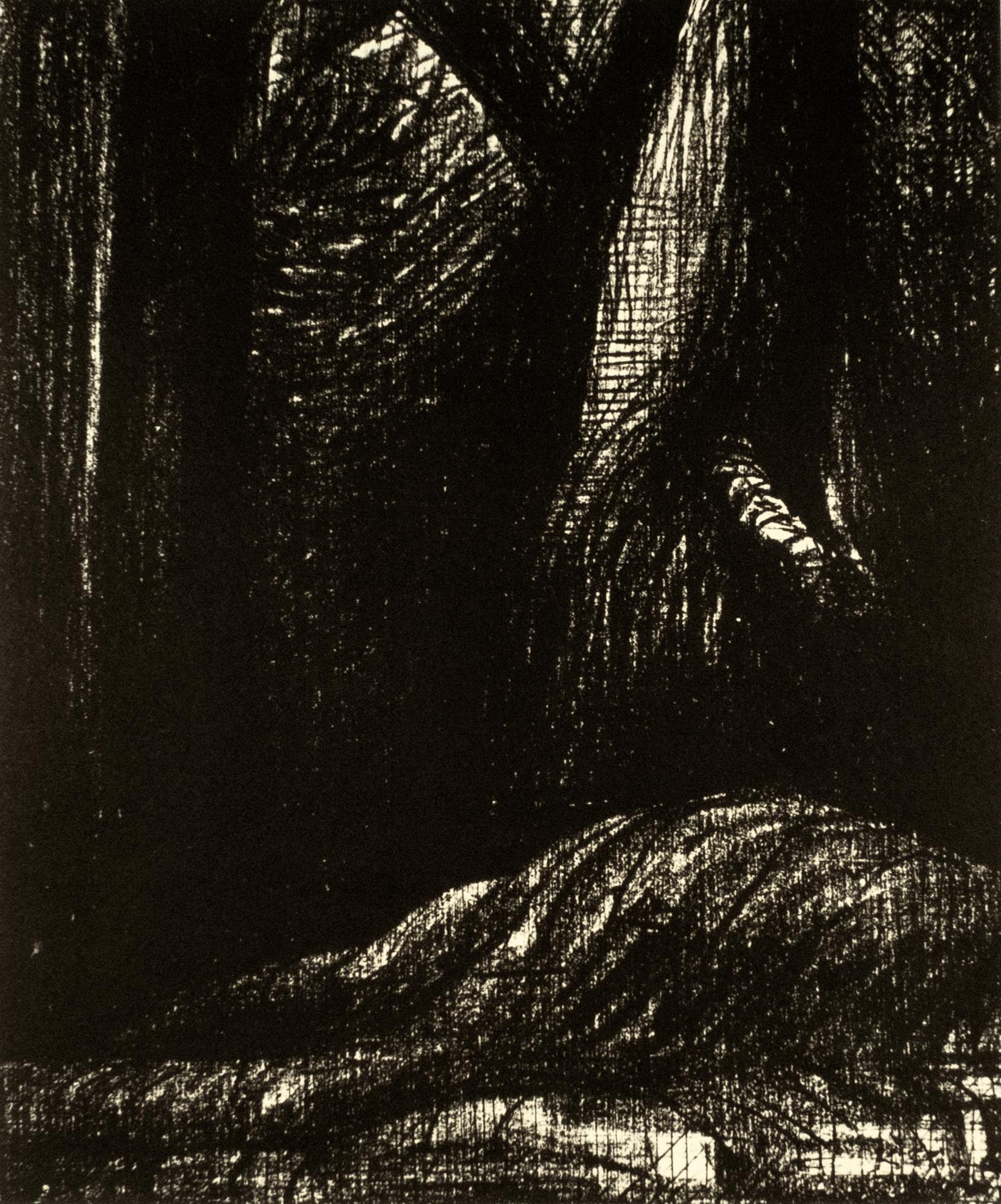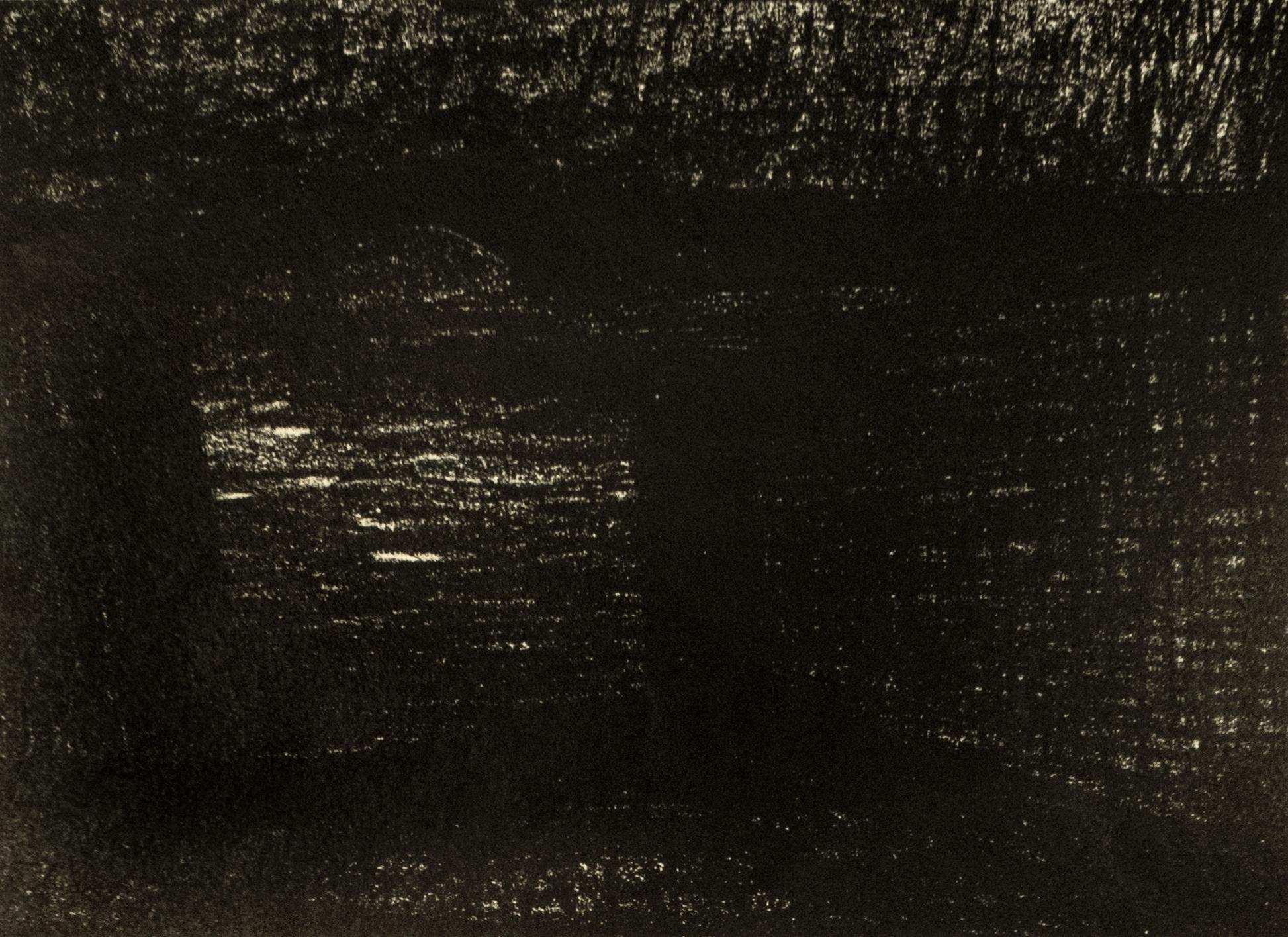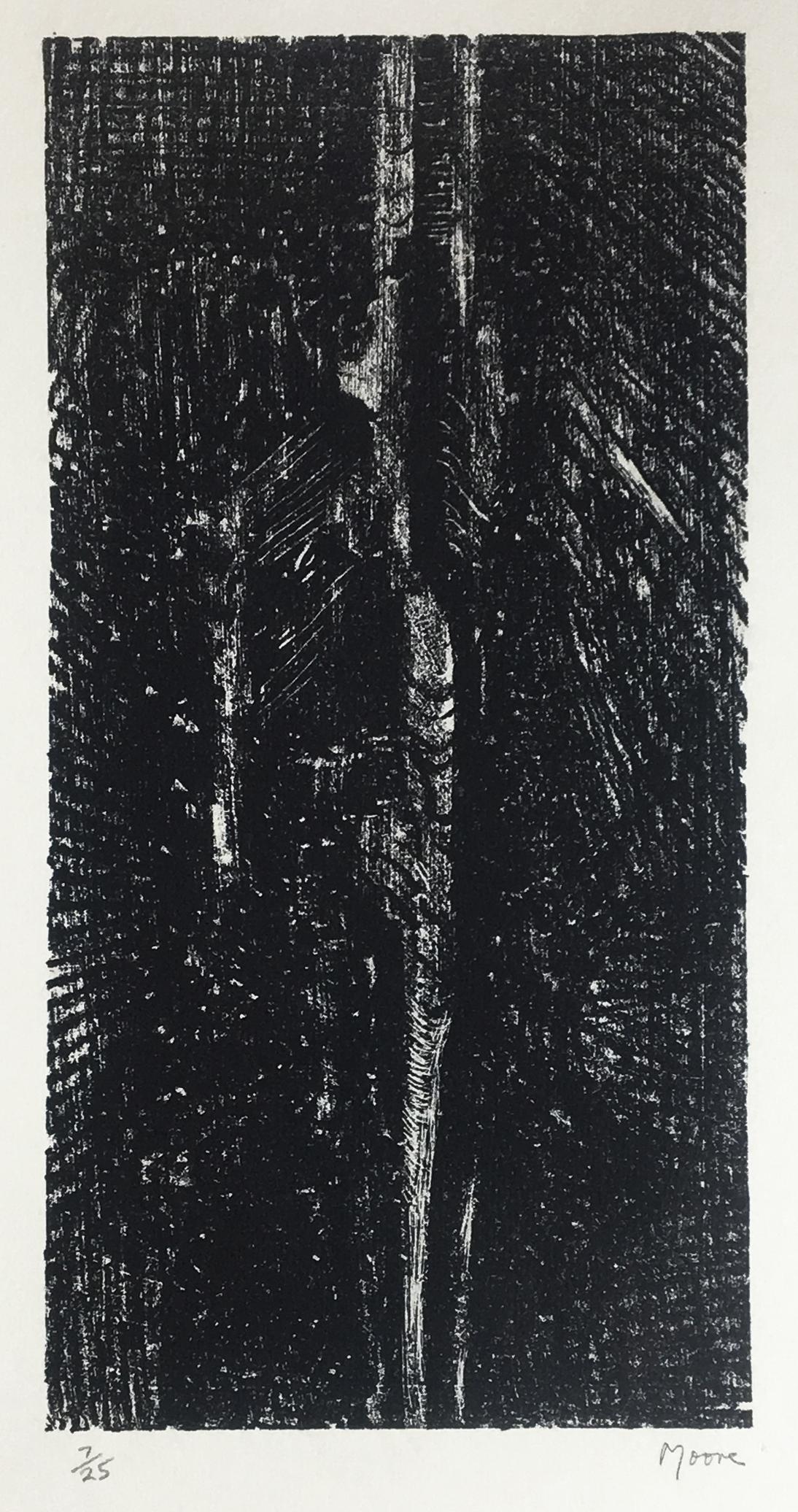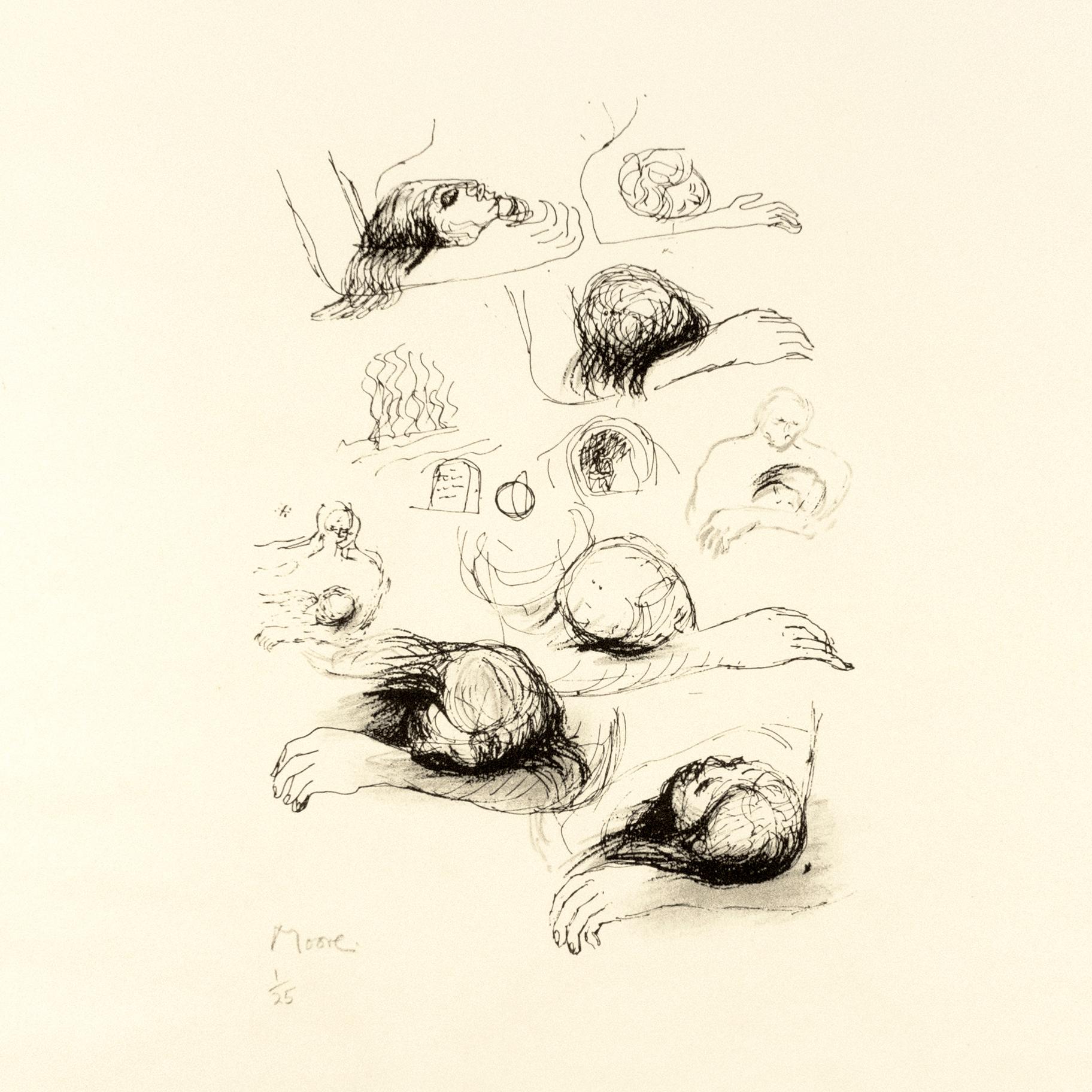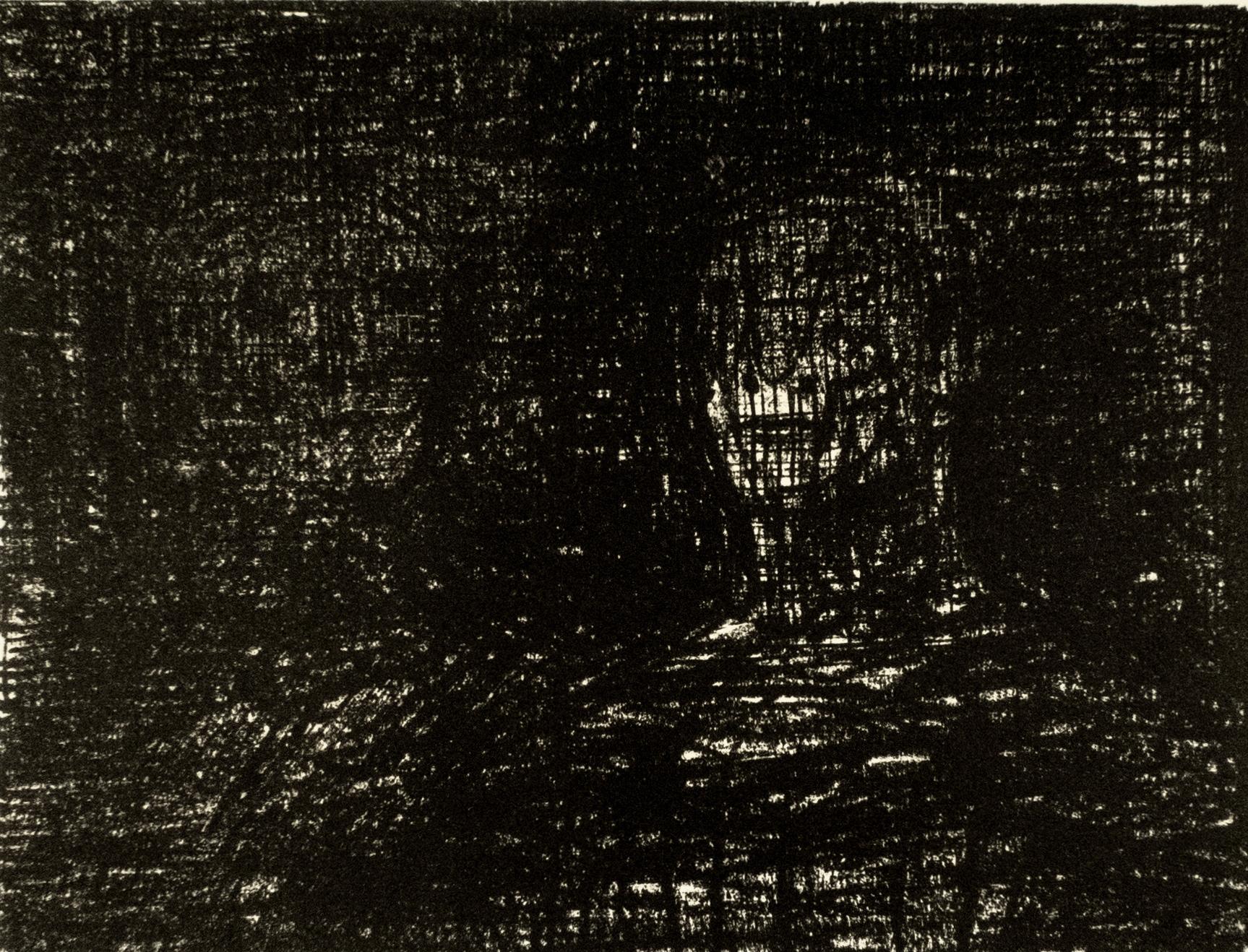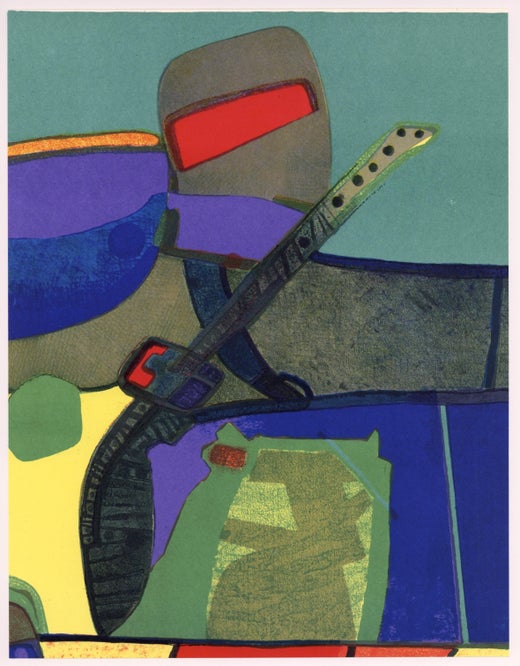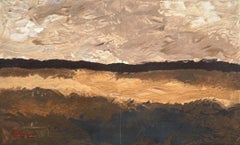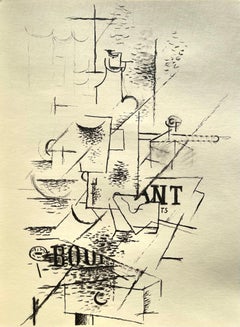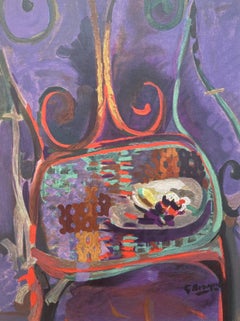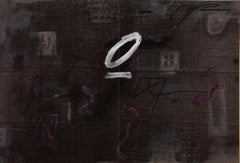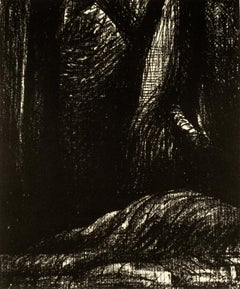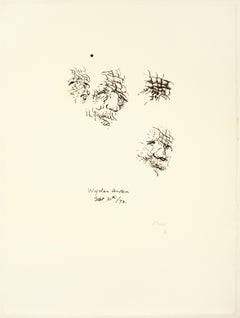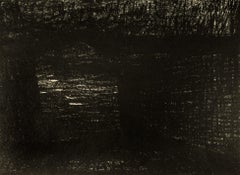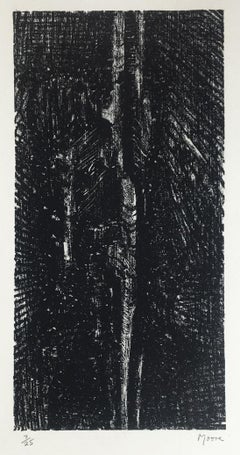Items Similar to Duetto, Société internationale d'art XXe siècle
Want more images or videos?
Request additional images or videos from the seller
1 of 6
Maurice EstèveDuetto, Société internationale d'art XXe siècle1969
1969
$895
£680.39
€794.24
CA$1,256.64
A$1,425.69
CHF 746.54
MX$17,589.15
NOK 9,256.92
SEK 8,857.10
DKK 5,924.29
Shipping
Retrieving quote...The 1stDibs Promise:
Authenticity Guarantee,
Money-Back Guarantee,
24-Hour Cancellation
About the Item
Lithograph on vélin paper. Paper Size: 12.4 x 9.65 inches. Inscription: Unsigned and unnumbered, as issued. Notes: From the album, XXe siècle, Nouvelle série, XXXIe Année N°33, Décembre 1969, Cahiers d'art créés en 1938 par G. di San Lazzaro, 1969. Published by Société Internationale d'Art XXe siècle, Paris, under the direction of Gualtieri di San Lazzaro, éditeur, Paris; printed by Mourlot Frères, Paris, 1969. Additional notes: Excerpted from the academic article, “Promoting Original Prints, The Role of Gualtieri di San Lazzaro and XXe Siècle” by Valerie Holman, published in Print Quarterly, XXXIII, 2016, 2, Until recently very little has been written on the Italian author and art publisher Gualtieri di San Lazzaro (1904-75), yet for 50 years he chronicled the life and work of contemporary artists, produced monographs of exceptional quality, and disseminated original prints by modern painters and sculptors through his best-known periodical, XXe Siècle. Although still a relatively unfamiliar figure in the United Kingdom, San Lazzaro is one of the half-dozen great art publishers of the mid-twentieth century who, together with his exemplar, Ambroise Vollard (1866-1939), and those of his own generation, Christian Zervos (1889-1970), Tériade (1889-1983) and Albert Skira (1904-73), chose to base himself in Paris, seeing it throughout his life as the centre of the art world….XXe Siècle, an illustrated periodical, was launched in 1938 and printed in editions of approximately 2,000, each issue containing both photographs and four-colour separation reproductions across a wide spectrum of visual imagery ranging from masterpieces of Western painting to popular prints from the Far East. Its large format, lively design, and close integration of text and image, were immediately striking, but its most innovative feature, introduced at the suggestion of Hans Arp (1886-1966), was the inclusion of original prints by contemporary artists in every issue. With obvious appeal for collectors, XXe Siècle was also designed to introduce a wider, international public to contemporary painting and sculpture through good quality colour reproductions and the immediacy of original prints. Comparable in price to Cahiers d'Art, early issues of XXe Siècle sold out rapidly. While San Lazzaro's own aesthetic preferences tended towards lyric abstraction, he made clear that XXe Siècle was non-partisan [publication ceased during World War II]….in 1951, San Lazzaro relaunched XXe Siècle with thematic issues that were materials based, or centred on a topic of current interest in the visual arts, particularly in Europe: concepts of space, matter, monochrome, mark-making and the sign.' A defining feature of the new series was Italy's artistic dialogue with France for, while San Laz-zaro had originally concentrated on Paris-based painters and sculptors, his aim was to create an international network, to make known the work of French artists in Italy and Italian artists in France, and subsequently extend this bilateral axis to the English-speak-ing world. The artists represented in No. I by an original print were all best known as sculptors: Arp, Laurens, Henry Moore (1898-186) and Marino Marini, San Lazzaro not only sought to show readers the full range of an artist's work, but to encourage the production of prints, a stimulus much appreciated, for example, by Magnelli…. Suffering from failing health, in 1968 San Lazzaro lost overall control of XXe Siècle to Léon Amiel, a printer-publisher who had provided financial backing and helped with distribution in America." Thematic issues now ceased and were replaced by a 'panorama' of the year, but San Lazzaro was still active as a publisher of books and albums of prints….Shortly after his death, San Lazzaro himself was the subject of two exhibitions: 'Omaggio a XXe Siècle' in Milan in December 1974 centred on graphic work by those artists closest to him late in life, while 'San Laz-zaro et ses Amis' at the Musée d'Art Moderne de la Ville de Paris in 1975 featured work by all those whose work he had promoted for more than 50 years: Arp, Calder (1898-1976), Capogrossi, Chagall, Sonia Delau-nay, Dubuffet, Estève, Lucio Fontana (1899-1968), Gili-oli (1911-77), Magnelli, Marini, Miró, Moore and Poliakoff. This exhibition was seen by one of his closest colleagues as an indirect portrait of San Lazzaro, a complex man whose modesty and reserve masked his unremitting drive to extend international appreciation of contemporary art, and to bring the reading public closer to its making through the medium of print.
MAURICE ESTEVE (1904-2001), was a French painter. Maurice Estève was born in the French town of Culan (Département Cher) on 2 May 1904. In 1913 he moved to Paris with his parents, where he soon began his education as an artist. Estève worked for a year as designer in a textile factory in Barcelona 1923. During his visits to the Louvre in the 1920s, Estève was particularly impressed by the painters Jean Fouquet and Paolo Uccello. Among the modern artists, Paul Cézanne had the greatest influence on Estève. Maurice Estève was largely self-educated, having only attended the free studio of the Académie Colarossi in 1924, where he tried to constructively implement of his motifs according to the model of Georges Braque and Fernand Léger, thus creating a kind of Cubist Fauvism. Estève began to move away from realism in 1928, and was influenced in the following years by Léger, Matisse, Picasso, and Bonnard. His first one-man exhibition was given at the Galerie Yvangot, Paris, 1930. He worked as assistant to Robert Delaunay on huge decorative panels for the 1937 Paris International Exhibition. In the 1940s his stylized figure, still-life and landscape compositions with strong colors gradually became completely abstract, with tight-knit interlocking shapes in rich, bold colors. Has made a number of watercolors and collages, and designed stained glass in 1957 for a church at Berlincourt in the Bernese Jura.
Estève's extensive work was not limited to the genre of painting. He was also active in collage, textile design and murals. Estève avoided the extrovert circles of Avant-garde but still belonged to the core of the artists who brought about the breakthrough of École de Paris after 1945.
Maurice Estève took part in the Venice Biennale in 1954. His œuvre, just like the works of his art colleagues Riopelle and Bazaine, established a new pictorial language: Lyrical abstractions with the aim of depicting form and color with an almost poetic attitude. Estève's works are represented in many well-known museums and collections around the world. In 2008, Maurice Estève's painting, Faverdines, sold for $587,185 USD at Sothebys, Paris, setting a world record for the artist.
- Creator:Maurice Estève (1904 - 2001, French)
- Creation Year:1969
- Dimensions:Height: 12.4 in (31.5 cm)Width: 9.65 in (24.52 cm)
- Medium:
- Movement & Style:
- Period:
- Condition:
- Gallery Location:Auburn Hills, MI
- Reference Number:1stDibs: LU1465216528202
Maurice Estève
Maurice Estève was born May 2, 1904 in Culan in the Cher where he spent his childhood with his grandparents. He joined them in 1913 in Paris, where he discovered the Louvre Museum (he is particularly impressed by the Battle of San Romano by Paolo Ucello). Returning to Culan for the summer, he stayed there during the war years, began painting as early as 1915. He lived in Paris again from 1918. Apprentice to a typographer then to a modern furniture design studio, he followed Drawing evening class, discovers in 1919 the painting of Cézanne. Back in Paris he attended Montparnasse the free workshop of the Academy Colarossi. Marked until then by the painting of the Primitives and the work of Cézanne, it passed temporarily in 1927 the influence of surrealism, including Giorgio de Chirico. He presents his first solo exhibition in 1930 before becoming interested in film and directing. On the advice of Braque who participates, he is asked in 1936 to exhibit in Stockholm with Matisse, Picasso, Juan Gris and Fernand Léger. He participated the following year in the realization of the wall decorations of Robert and Sonia Delaunay for the pavilions of the Aviation and Railways at the Universal Exhibition of Paris. Estève, who works regularly during the summer in Culan, makes lithographs, regularly practices watercolor but also charcoal, monotype, collage. In 1970, he received the Grand Prix National des Arts. From 1981 are organized several retrospectives of his work. The City of Bourges decided to present all the works (more than a hundred) which the painter donated to him in 1985 in the Hotel des Echevins, restored with the assistance of the Historic Monuments and the Direction of the Museums of France to become the "Estève Museum", inaugurated in 1987. Estève moved permanently to Culan in 1995. He died on June 27, 2001.
About the Seller
4.9
Platinum Seller
Premium sellers with a 4.7+ rating and 24-hour response times
Established in 1978
1stDibs seller since 2021
1,121 sales on 1stDibs
Typical response time: <1 hour
- ShippingRetrieving quote...Shipping from: Auburn Hills, MI
- Return Policy
Authenticity Guarantee
In the unlikely event there’s an issue with an item’s authenticity, contact us within 1 year for a full refund. DetailsMoney-Back Guarantee
If your item is not as described, is damaged in transit, or does not arrive, contact us within 7 days for a full refund. Details24-Hour Cancellation
You have a 24-hour grace period in which to reconsider your purchase, with no questions asked.Vetted Professional Sellers
Our world-class sellers must adhere to strict standards for service and quality, maintaining the integrity of our listings.Price-Match Guarantee
If you find that a seller listed the same item for a lower price elsewhere, we’ll match it.Trusted Global Delivery
Our best-in-class carrier network provides specialized shipping options worldwide, including custom delivery.More From This Seller
View AllGeorges Braque, Les Champs (Maeght N°1045), L'édition de tête (after)
By Georges Braque
Located in Auburn Hills, MI
Lithograph on vélin de Rives paper. Inscription: Unsigned and unnumbered, as issued. Good condition, with centerfold, as issued. Notes: From the folio, tête edition, Consacre a Pierr...
Category
1960s Modern Abstract Prints
Materials
Lithograph
$1,596 Sale Price
20% Off
Free Shipping
Georges Braque, La bouteille (Maeght N°1051), L'édition de tête (after)
By Georges Braque
Located in Auburn Hills, MI
Lithograph on vélin de Rives paper. Inscription: Unsigned and unnumbered, as issued. Good condition. Notes: From the folio, tête edition, Consacre aux Papiers Colles de Georges Braqu...
Category
1960s Modern Abstract Prints
Materials
Lithograph
$1,436 Sale Price
20% Off
Free Shipping
Georges Braque, La Chaise (Maeght N°1046), L'édition de tête (after)
By Georges Braque
Located in Auburn Hills, MI
Lithograph on vélin de Rives paper. Inscription: Unsigned and unnumbered, as issued. Good condition. Notes: From the folio, tête edition, Consacre a Pierre Reverdy et Georges Braque,...
Category
1960s Modern Abstract Prints
Materials
Lithograph
$1,436 Sale Price
20% Off
Free Shipping
Antoni Tàpies, Composition (Galfetti 731), L'édition de tête (after)
By Antoni Tàpies
Located in Auburn Hills, MI
Lithograph on vélin d'Arches paper. Inscription: Unsigned and unnumbered, as issued. Good condition, with centerfold, as issued. Notes: From the folio, tête edition, Consacré à Anton...
Category
1970s Modern Abstract Prints
Materials
Lithograph
$1,436 Sale Price
20% Off
Free Shipping
Georges Braque, Composition, L'édition de tête (after)
By Georges Braque
Located in Auburn Hills, MI
Lithograph on vélin de Lana paper. Inscription: Unsigned and unnumbered, as issued. Good condition. Notes: From the folio, tête edition, Consacré a Georges Braque, Derniers messages,...
Category
1960s Modern Abstract Prints
Materials
Lithograph
Georges Braque, Composition, L'édition de tête (after)
By Georges Braque
Located in Auburn Hills, MI
Lithograph on vélin de Lana paper. Inscription: Unsigned and unnumbered, as issued. Good condition, with centerfold, as issued. Notes: From the folio, tête edition, Consacré a George...
Category
1960s Modern Abstract Prints
Materials
Lithograph
You May Also Like
The Cavern: abstract black drawing based on Auden poetry and Yorkshire landscape
By Henry Moore
Located in New York, NY
One of a series of 18 lithographs drawn by the artist for the Auden Poems/Moore Lithographs 1974 book and portfolio. This work is from an edition of 25 printed on vellum aside from t...
Category
Late 20th Century Modern Landscape Prints
Materials
Lithograph
Sketches of Auden: black drawing based on Auden poetry and Yorkshire landscape
By Henry Moore
Located in New York, NY
This black and white portrait drawing is one of a series of 18 lithographs drawn by the artist for the Auden Poems/Moore Lithographs 1974 book and portfolio. This work is from an edition of 25 printed on vellum aside from the portfolio (edition of 75) and the book. Signed by the artist and numbered 8/25 lower right in pencil.
This print features a pair of sketches...
Category
Late 20th Century Modern Abstract Prints
Materials
Lithograph
Bridge: abstract black drawing based on Auden poetry and Yorkshire landscape
By Henry Moore
Located in New York, NY
One of a series of 18 lithographs drawn by the artist for the Auden Poems/Moore Lithographs 1974 book and portfolio. This work is from an edition of 25 printed on vellum aside from t...
Category
Late 20th Century Modern Landscape Prints
Materials
Lithograph
Split Stone: abstract drawing based on Auden poetry and Yorkshire landscape
By Henry Moore
Located in New York, NY
This abstract, black and white drawing is one of a series of 18 lithographs drawn by the artist for the Auden Poems/Moore Lithographs 1974 book and portfolio. This work is from an ed...
Category
Late 20th Century Modern Abstract Prints
Materials
Lithograph
Lullaby Sketches: black white drawing based on Auden poetry and Yorkshire lands
By Henry Moore
Located in New York, NY
One of a series of 18 lithographs drawn by the artist for the Auden Poems/Moore Lithographs 1974 book and portfolio. This work is from an edition of 25 printed on vellum aside from the portfolio (edition of 75) and the book. Signed by the artist and numbered 1/25 lower left in pencil.
This print features small sketches of heads resting on forearms. Moore experimented with different angles, appearing to practice for the composition for Lullaby: Sleeping Head, which depicts a shadowy figure supporting the head of a sleeping woman. Lullaby: Sketches is a rare window into Moore’s process of composing an image. Delicate, single-line arms and hair reveal the sculptor’s equal talent as a draftsman.
The imagery for Lullaby Sketches was inspired by Auden’s poem Lullaby. Lullaby was the first poem Moore read for this project, which begins:
“Lay your sleeping head, my love / Human on my faithless arm; / Time and fevers burn away Individual beauty from / Thoughtful children, and the grave / Proves the child ephemeral: / But in my arms till break of day / Let the living creature lie, / Mortal, guilty, but to me / The entirely beautiful.”
The Auden/Moore limited edition book and portfolio were exhibited on publication at the British Museum, London, with an accompanying catalogue. Lullaby Sketches is one of a group of lithographs...
Category
Late 20th Century Modern Abstract Prints
Materials
Lithograph
Thin-lipped Armourer I: W. H. Auden poetry with Henry Moore, Yorkshire landscape
By Henry Moore
Located in New York, NY
This darkly-shaded portrait of two figures is one of a series of 18 lithographs drawn by the artist for the Auden Poems/Moore Lithographs 1974 book and portfolio. This work is from an edition of 25 printed on vellum aside from the portfolio (edition of 75) and the book. Signed by the artist lower right in pencil; numbered lower left in pencil.
Printed in inky black, Thin-lipped Armourer features two figures subsumed in crosshatched shadow. The figure on the left can barely be seen, and the hollows of his eyes recall a skull. Numerous Moore prints from this series include two heads, perhaps relating to the first lines of Auden’s poem Lullaby. Lullaby was the first poem Moore read for this project, which begins:
“Lay your sleeping head, my love / Human on my faithless arm; / Time and fevers burn away Individual beauty from / Thoughtful children, and the grave / Proves the child ephemeral: / But in my arms till break of day / Let the living creature lie, / Mortal, guilty, but to me / The entirely beautiful.”
This print evinces Moore’s fascination with light and dark – what he called a “…bias towards the blackness and mysterious depths.” Moore was inspired by the prints of Rembrandt and the drawings of Seurat, and even drew on his memories of viewing the Altamira cave paintings, recalling how some of the images used the shadow of candlelight on the rough surface of the rock to model light. Shortly before starting work on this series of lithographs, Moore had fallen ill, leaving him aware of his own mortality. His mood pervaded these prints with a sense of danger and foreboding.
The Auden/Moore limited edition book and portfolio were exhibited on publication at the British Museum, London, with an accompanying catalogue. Thin-lipped Armourer I is one of a group of lithographs...
Category
Late 20th Century Modern Abstract Prints
Materials
Lithograph
